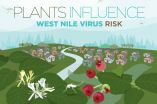Antipsychotics have gained popularity as treatments for psychiatric disorders in young people. Clinical trials support the efficacy of several antipsychotics for child and adolescent bipolar mania, adolescent schizophrenia, and irritability associated with autism in adolescents and children. Yet most office visits by children and adolescents that involve antipsychotic treatment do not include one of these clinical diagnoses.
Researcher Mark Olfson, M.D., M.P.H., of Columbia University, New York, and coauthors describe patterns and trends in antipsychotic use by young people in the United States. The focus of researchers included age-related variations, the role of psychiatrists and children and adolescent psychiatrists in prescribing antipsychotics, and clinical diagnoses.
The authors analyzed antipsychotic prescription data from a database that includes about 60 percent of all retails pharmacies in the United States. The database included 36,484 younger children, 226,914 older children, 335,737 adolescents and 252,739 young adults with one or more antipsychotic prescriptions, which corresponds to about 1.3 million children nationwide. There were about 270,000 antipsychotic prescriptions dispensed to younger children, 2.1 million to older children, 2.8 million to adolescents and 1.8 million to young adults nationwide in 2010.
The study reports the percentages of young people using antipsychotics in 2006 and 2010, respectively, were: 0.14 percent and 0.11 percent for younger children ages 1-6; 0.85 percent and 0.80 percent for older children ages 7 to 12; 1.10 percent and 1.19 percent for adolescents ages 13 to 18; and 0.69 percent and 0.84 percent for young adults ages 19 to 24.
Males were more likely than females in 2010 to use antipsychotics, especially during childhood and adolescence. Among young people treated in 2010 with antipsychotics, having a prescription from a psychiatrist was less common among younger children (57.9 percent) than among the older age groups (70.4 percent to 77.9 percent). Only a minority of children filled a prescription from a child and adolescent psychiatrist (29.3 percent of younger children, 39.2 percent of older children, 39.2 percent of adolescents and 14.2 percent of young adults in 2010), according to the results.
The authors also found that most of the younger children (60 percent), older children (56.7 percent), adolescents (62 percent) and young adults (67.1 percent) treated with antipsychotic medications had no outpatient or inpatient claim that included a mental disorder diagnosis when 2009 medical claims and a sample from the database were merged.
Among young people with claims for mental disorders in 2009 who were treated with antipsychotics, the most common diagnoses were attention-deficit/hyperactivity disorder in younger children (52.5 percent), older children (60.1 percent) and adolescents (34.9 percent) and depression in young adults (34.5 percent).
The authors note limitations of the analysis, which include prescription data that captures medicines purchased rather than consumed and no data were available concerning the effectiveness or safety of the antipsychotics.
"Nevertheless, age and sex antipsychotic use patterns suggest that much of the antipsychotic treatment of children and younger adolescents targets age-limited behavioral problems. In older teenagers and young adults, a developmental period of high risk for the onset of psychotic disorders, antipsychotic use increased between 2006 and 2010. Clinical policy makers have opportunities to promote improved quality and safety of antipsychotic medication use in young people through expanded use of quality measures, physician education, telephone- and Internet-based child and adolescent psychiatry consultation models and improved access to alternative, evidence-based psychosocial treatments," the study concludes. (JAMA Psychiatry. Published online July 1, 2015. doi:10.1001/jamapsychiatry.2015.0500. Available pre-embargo to the media at http://media.jamanetwork.com.)
Editor's Note: This work was funded by contracts from the National Institutes of Health to Yale University and Columbia University. Please see the article for additional information, including other authors, author contributions and affiliations, financial disclosures, funding and support, etc.
Editorial: Antipsychotic Use in Youth Without Psychosis
In a related editorial, Christoph U. Correll, M.D., of the North Shore-Long Island Jewish Health System, Glen Oaks, N.Y., and Joseph C. Blader, Ph.D., the University of Texas Health Science Center at San Antonio, write: "Olfson and colleagues cogently integrate epidemiologic findings with brain maturation findings concerning the rise of aggression and behavioral problems in late childhood and their decrease in later adolescence to explain the parallel trends in antipsychotic use. If this finding is true, then improving the quality and availability of treatments addressing the underlying disturbances (e.g. impulse control deficits, executive dysfunction, mood dysregulation) through this high-risk period should be a priority. ... As a field we must accurately identify youth for whom antipsychotic treatment is truly necessary by first exhausting lower-risk interventions for youth without psychosis. Finally, when required, antipsychotic therapy should be as brief as possible and closely monitored." (JAMA Psychiatry. Published online July 1, 2015. doi:10.1001/jamapsychiatry.2015.0632. Available pre-embargo to the media at http://media.jamanetwork.com.)
Editor's Note: An author made conflict of interest disclosures. Please see the article for additional information, including other authors, author contributions and affiliations, financial disclosures, funding and support, etc.
INFORMATION:
Media Advisory: To contact corresponding author Mark Olfson, M.D., M.P.H., call Rachel Yarmolinsky at 646-774-5353 or email Yarmoli@nyspi.columbia.edu. To contact editorial author Christoph U. Correll, M.D., call Michelle Pinto at 516-465-2649 or e-mail mpinto@nshs.edu.

